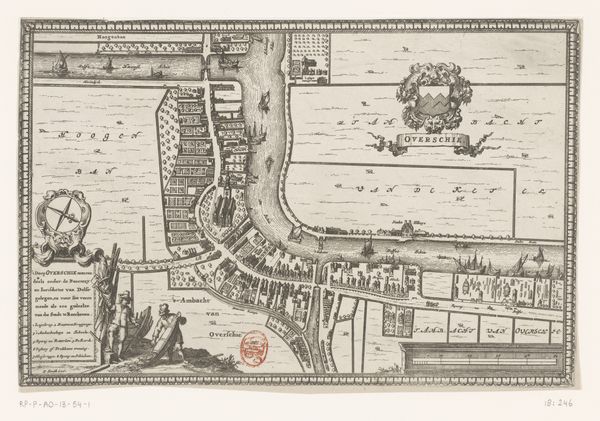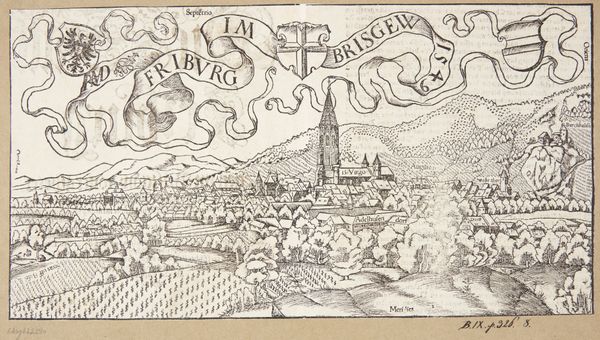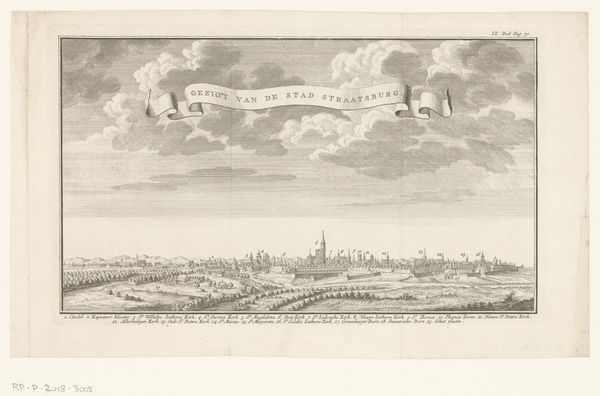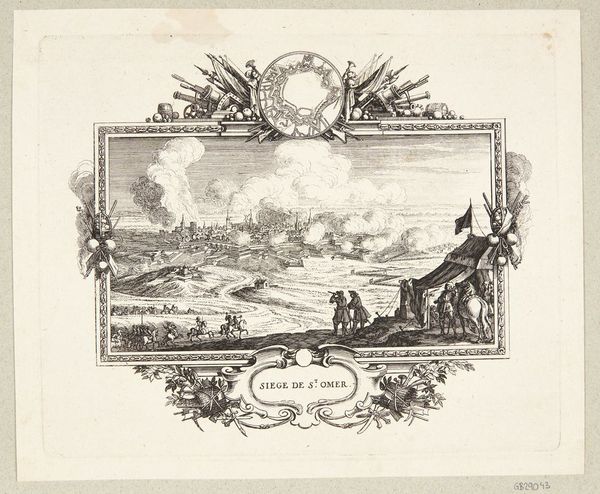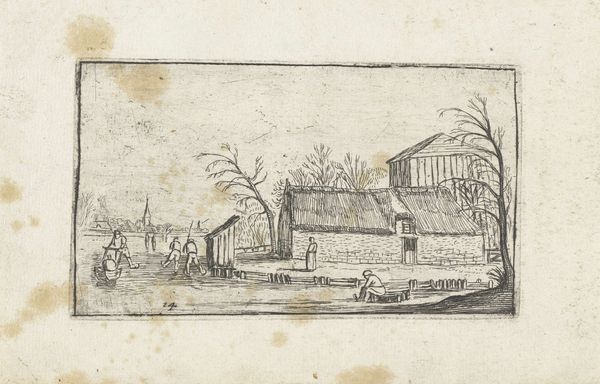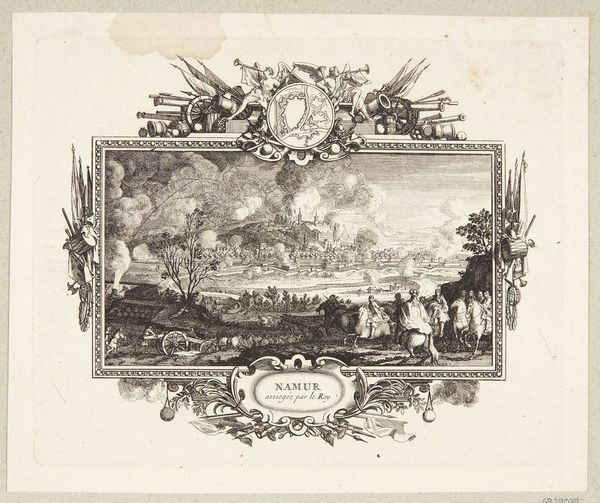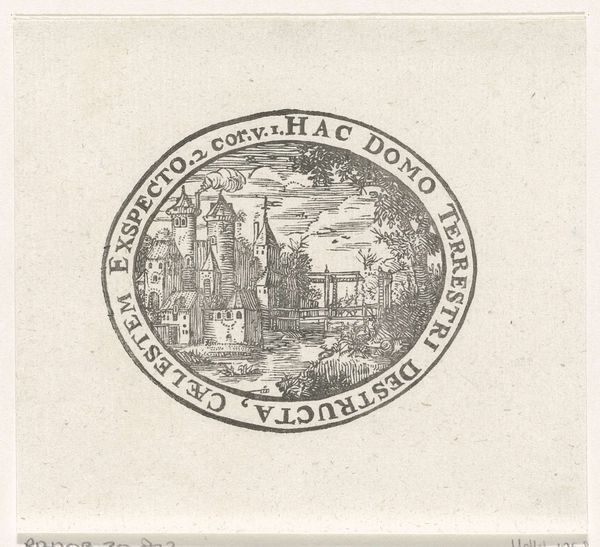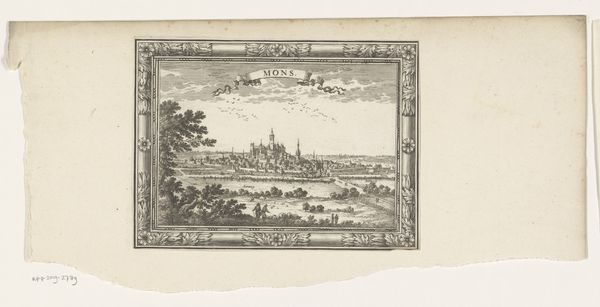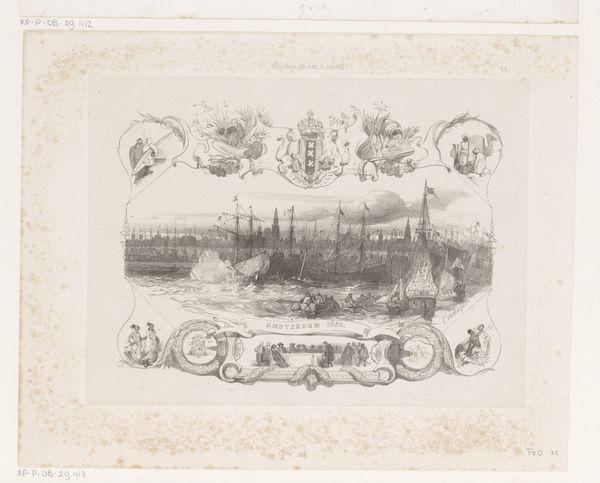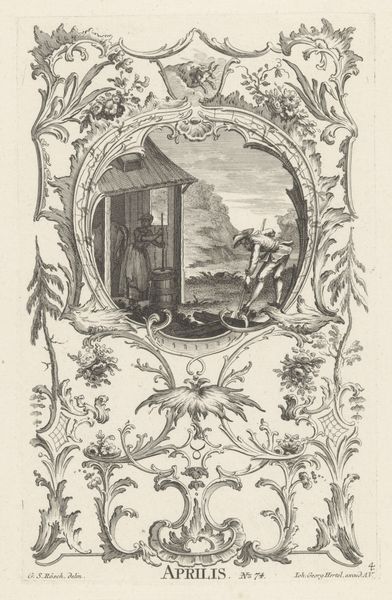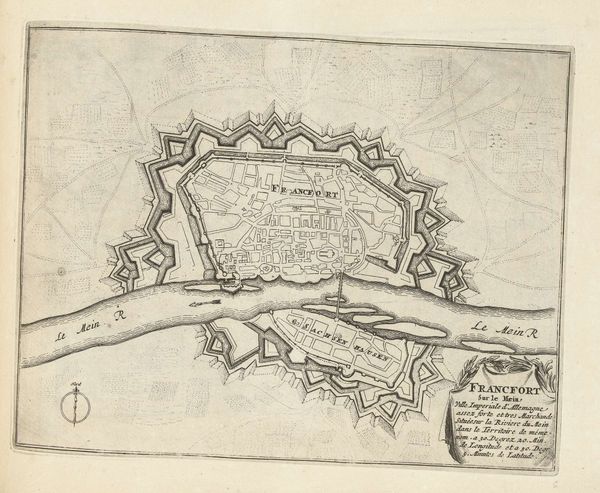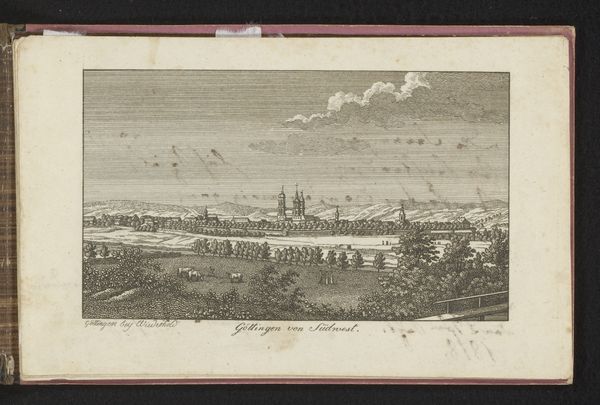
Title Page Designed for the Sale of the Series of Paysages Gravés pour Jean de Médicis, from Paysages Gravés pour Jean de Médicis appelées aussi Paysages Dessinés a Florence, Vues de Florence, Paysages d'Italie, et Paysages Définitifs (Landscapes Engraved for Giovanni de'Medici, Landscapes Designed in Florence, Views of Florence, Landscapes of Italy, and Definitive Landscapes) 1613 - 1623
0:00
0:00
drawing, print, engraving
#
drawing
# print
#
landscape
#
italian-renaissance
#
engraving
Dimensions: Sheet: 5 3/8 x 10 1/4 in. (13.7 x 26 cm) Plate: 4 5/8 x 9 5/8 in. (11.8 x 24.5 cm)
Copyright: Public Domain
Curator: What an intriguing image. This is a title page designed by François Collignon for a series of engravings titled “Paysages Gravés pour Jean de Médicis,” dating back to the early 17th century. It offers us a glimpse into how landscapes were being framed—literally—at the time. Editor: Framed is the right word. The elaborate border nearly overwhelms the scene within, which feels delicate, almost like a fleeting memory. There's something about the muted tones of the engraving that evokes a sense of distance, not just geographically, but temporally too. Curator: The border, I think, is essential to understanding its symbolic function. Its intricate ornamentation, the cartouche at the top, and the scrolled acanthus leaves… they all speak to the Renaissance ideal of framing nature, ordering it, possessing it visually. It's not merely a landscape, it's a constructed view. Editor: And for whom was this view constructed? Jean de'Medici, obviously. Placing landscapes within such ornate, symbolic frames underscores the power dynamics at play. This image functions as a commodity—a privilege to own, or at least have access to, such refined representations of nature. The city as a backdrop also makes me wonder about urbanization during that time. Curator: Absolutely. The series itself suggests a controlled and romanticized version of Florentine and Italian landscapes designed for aristocratic consumption, a nostalgic vision even then perhaps, given the social upheavals occurring. It also taps into the traditional iconographic symbolism of landscapes representing cultivated virtue. The river and the boats crossing, speak to passages of life and prosperity of the ruling family. Editor: It really highlights how landscapes aren't just passive backdrops, but rather stages upon which power, identity, and social standing were negotiated. These idealized versions mask potential exploitation and erasures necessary for its construction. This engraving reveals as much as it conceals. It presents a highly selective perspective. Curator: The detail Collignon achieved through engraving is remarkable, capturing not just the scene itself, but a very particular mindset. We should take into account the impact that visual ownership had. It consolidated power by suggesting both political and economical rule through landscape representation. Editor: This image reminds us that looking closely at these older visual forms can give a more granular look into the visual languages of control and idealized power.
Comments
No comments
Be the first to comment and join the conversation on the ultimate creative platform.
